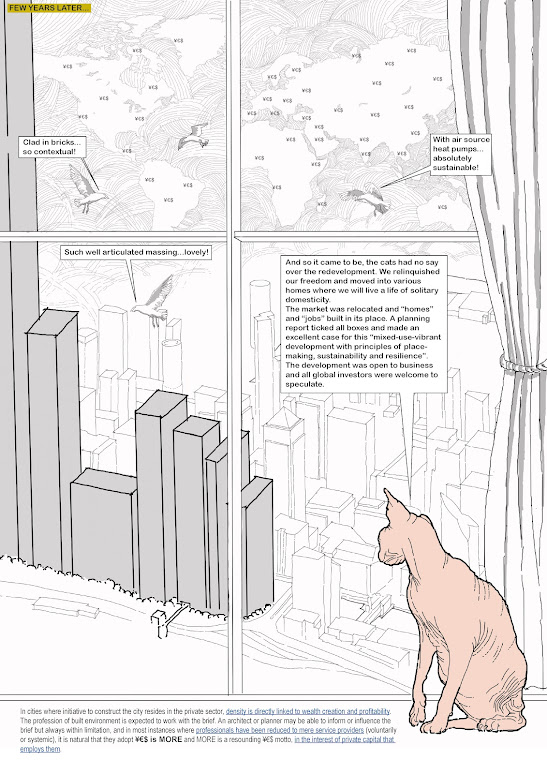Increasingly architects are told within the academic as well as professional sphere to imagine architecture as a collective effort, similar to an orchestra, where through the collective efforts of multiple specialists who shoulder no responsibility towards the ACT OF MAKING a manifestation / condensation of all the input, all the feedback, all the data, constraints, opportunities, stakeholder engagements, policy compliance etc each Specialist / Social Scientist / Stakeholder / Client and Investor even will claim merit for MAKING "it" happen and therefore MAKING it...according to me ludicrous situation, similar to say a Paint manufacturer or Gallery owner or the Buyer can claim merit for works of the Artist.
An excerpt from interview by an upcoming practice SER Architects:
"What needs to change in the field of architecture according to you?
From our point of view architecture needs to change starting from the figure of the architect. By eliminating the common understanding of a mastermind seeking the next masterpiece that will become an icon in history, we believe that architecture could find its way into the background of life and become an enabler and a guide rather than an imposer. We should be offering spaces of possibilities, rather than forcing the signature of a person onto the lives of other people. We think that architecture should be rather understood as a matter of relations than as matter of objects."
Their response above captures the current position architects increasingly find themselves in and often, like here start believing in what is being virtue signaled.
In an orchestra one only imagine the absence one would feel if the pianist or the violinist didn't show up! Ofcourse every musician would lend their own personal touch to the the composition through their presence and years of practice, but will they claim credits to the composition itself? or would one walk up to a Composer and say it is a collective effort and try not to make music as if its your next masterpiece and a milestone in history instead blend with the ambient sounds of the forest or better still let the musicians compose. Before a smartarse says "Jazz!", the musicians there play the role of composers that need probably significantly more discipline and ability to play a dual role of playing music and simultaneously composing in real time...they haven't relinquished the ACT of MAKING, they still PLAY and CREATE music.
Architecture as a profession still MAKES and it needs to take and be given credit for that. We would often lean on the expertise or specialisms or knowledge of others but the intentionality or compositional decisions or hierarchy of priorities are being pulled together by Architect. If anything, going by the abysmal quality of our buildings, cities and world we need some solid mastermind hero architects who take pride and confidence in putting pen to paper and calling out shit.

